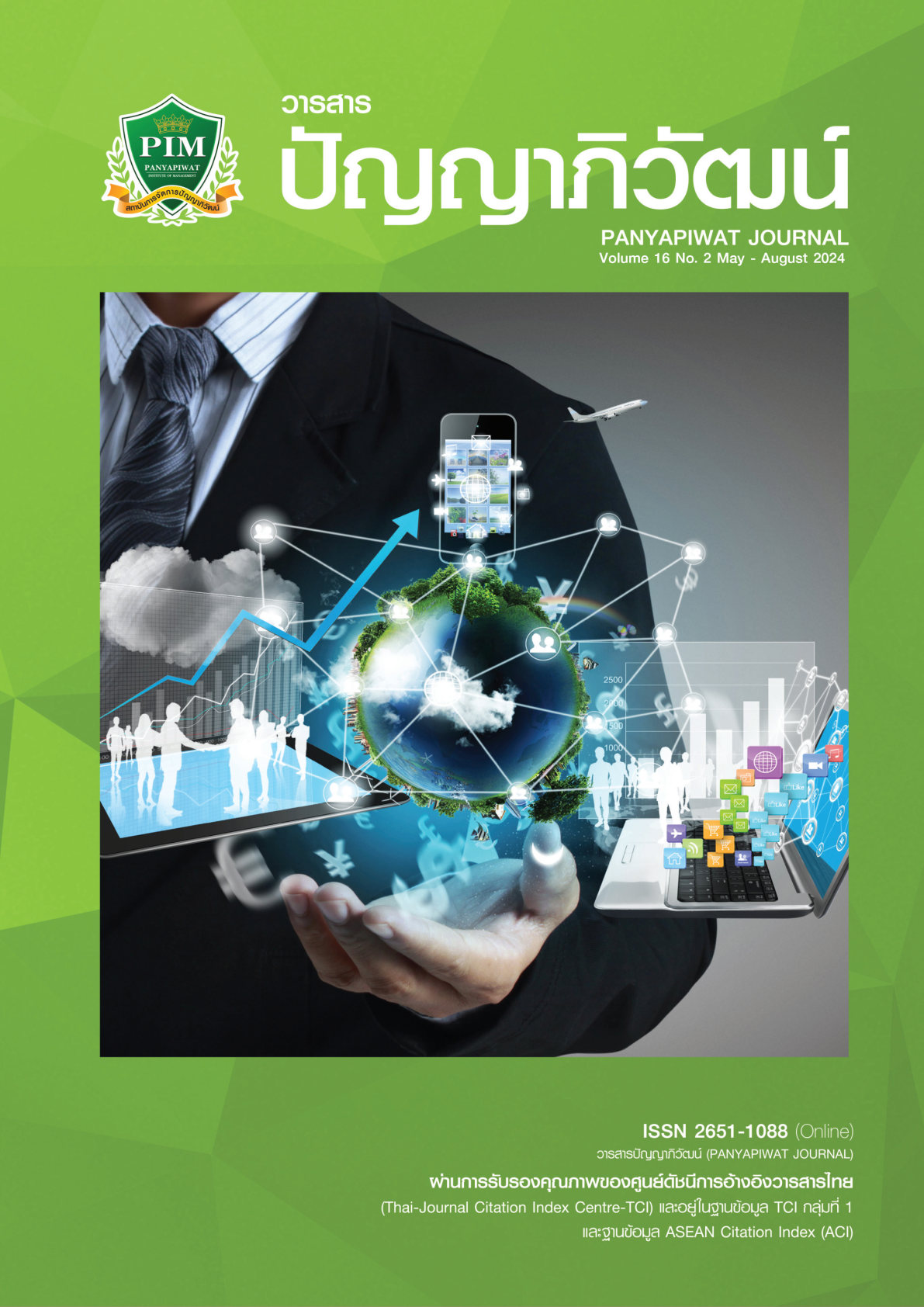AN ANALYSIS OF CONGESTION FACTORS AT TRAFFIC LIGHT WAITING POINTS IN VICTORY MONUMENT ROUNDABOUT
Main Article Content
Abstract
The purposes of this research are (1) to analyze factors causing congestion within the circle and (2) to determine guidelines for solving the congestion problems. The research utilized two tools: (1) Analysis of Variance (ANOVA) with XLSTAT program and (2) the developed micro-level traffic condition model with the Simulation of Urban MObility program using a database from the Geographic Information Program (QGIS). It is assumed that the average
waiting time and average vehicle queue length are not different among the 5 tested groups according to the specified factors.
The results of this research have shown that the factors affecting traffic congestion are the duration of traffic light, the number of traffic lanes, and the traffic lane directions both during rush hours and outside rush hours. As for the guidelines for solving the congestion problems by modifying the traffic light pattern, it is found that the Queue Storage Capacity method is the most promising method with the following results: (1) during the rush hours, the average waiting time decreases by 1.58 seconds per car or 0.74% and (2) during the rush hours, the average waiting line length also decreases by 0.84 cars or 4.57%. As for outside the rush hours, the results are as follows: (1) the average waiting time decreases by 1.57 seconds per car or 1.41% and (2) the average waiting line length decreases by 1.77 vehicles or 15.02%.
Article Details

This work is licensed under a Creative Commons Attribution-NonCommercial-NoDerivatives 4.0 International License.
I and co-author(s) certify that articles of this proposal had not yet been published and is not in the process of publication in journals or other published sources. I and co-author accept the rules of the manuscript consideration. Both agree that the editors have the right to consider and make recommendations to the appropriate source. With this rights offering articles that have been published to Panyapiwat Institute of Management. If there is a claim of copyright infringement on the part of the text or graphics that appear in the article. I and co-author(s) agree on sole responsibility.
References
Archana, N., Manish, C., & Sanjay, S. (2022). An empirical study on parameters affecting traffic stream variables under rainy conditions. In The Proceedings of the 14th International Conference on Communication Systems & NETworkS (COMSNETS). (pp. 818-823). IEEE.
Behrisch, M., Bieker-Walz, L., Erdmann, J., & Krajzewicz, D. (2011). Sumo–simulation of urban mobility: An overview. In The Proceedings of the Third International Conference on Advances in System Simulation (pp. 63-68). Research Gate.
Chawitra, T. (2011). Roadside stand market at Victory Monument, Bangkok. Journal of Behavioral Science for Development, 3(1), 28-42. [in Thai]
Gracia, M. D., González-Ramírez, R. G., & Mar-Ortiz, J. (2017). The impact of lanes segmentation and booking levels on a container terminal gate congestion. Flexible Services and Manufacturing Journal, 29, 403-432.
Indee, T. (2021). Analyzing a mixed toll collection system using traffic microsimulation models: A case study of Din Daeng Toll Plaza. Ladkrabang Engineering Journal, 38(1), 1-14. [in Thai]
Islam, S. (2018). Simulation of truck arrival process at a seaport: Evaluating truck-sharing benefits for empty trips reduction. International Journal of Logistics Research and Applications, 21(1), 94-112.
Kamollimsakul, W., & Pitaksringkarn, J. (2018). Traffic operational analysis of continuous flow urban interchange using micro simulation modeling technique: A case study of Dat Daruni School, Chachoengsao. Ladkrabang Engineering Journal, 35(1), 23-32. [in Thai]
Kantanon, V. (2018). Determining the use of coordinated signal control case study: Intersection network on Mahidol Road, Chiang Mai Province [Master’s thesis]. Thammasat University. [in Thai]
Keereewong, S., Satiennam, T., Satiennam, W., & Kronprasert, N. (2018). A study of Black Bpot Improvement at Intersections of Engineering Faculty, Khon Kaen University by applying microscopic traffic Simulation. KKU Research Journal (Graduate Studies), 19(1), 88-100. [in Thai]
Nopphonkrang, C., Kumphan, T., Tosing, N., Soyphet, S., & Rattaphan, S. (2021). A study feasibility for traffic control at intersection: A case study at Sipruetthalai Rajabhat Seminar Hall, Muang District Sisaket Province. Science and Technology Journal of Sisaket Rajabhat University, 1(2), 53-61. [in Thai]
Office of Transport and Traffic Policy and Planning. (2022). Traffic volume at intersections in Bangkok in 2021. https://data.bangkok.go.th/dataset/traffic_volume
Seksan, J., Anurak, S., Choosombat, C., Kumkrut, T., & Wongsuthep, S. (2021). The application of simulation technique in traffic lights timing for reducing the waiting time at Thakub Intersection, Muang District, Surat Thani Province. Thai Industrial Engineering Network Journal, 7(1), 15-22. [in Thai]
Suanchan, L., & Pitaksringkarn, J. (2019). A study of traffic signal coordination system: A case study of the Royal Initiate Project Road of His Majesty King RAMA IX. Engineering Journal of Research and Development, 31(1), 73-85. [in Thai]
Surachodkriangkrai, N., & Karoonsoontawong, A. (2015). Roundabout metering signal design: A case study of democracy monument roundabout. Panyapiwat Journal, 7(1), 194-206. [in Thai]
Wang, J., Huynh, N. N., & Pena, E. (2022). Land side truck traffic modeling at container terminals by a stationary two-class queuing strategy with switching. Journal of International Logistics and Trade, 20(3), 118-134.
Wichaimethawee, T. (2002). Development of traffic signal control strategies for saturated traffic conditions [Master’s thesis]. Chulalongkorn University. [in Thai]
Yaibok, C., & Luathep, P. (2015). An analysis of traffic management of multiple consecutive intersections: A case study of Hat Yai Municipality. UBU Engineering Journal, 8(1), 103-114. [in Thai]


